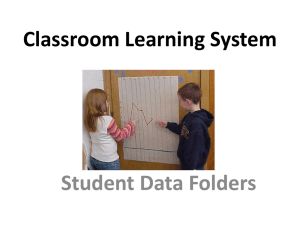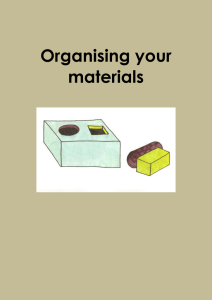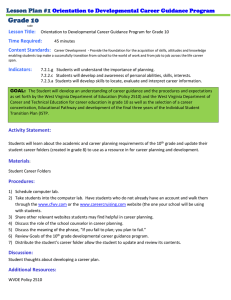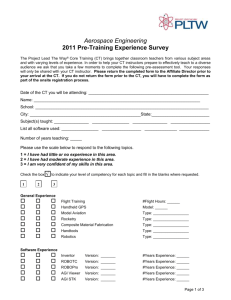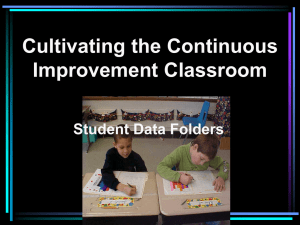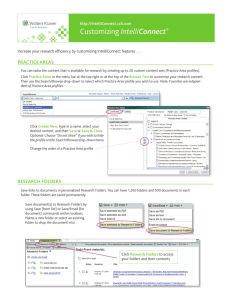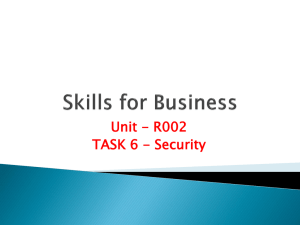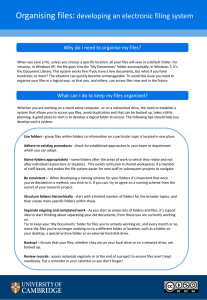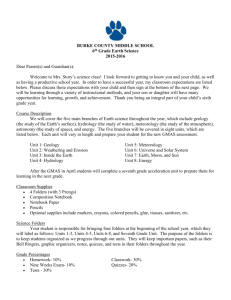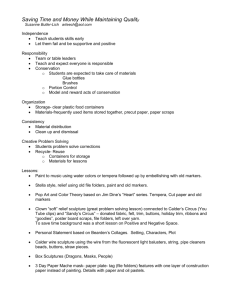Student Data Folders Explained
advertisement
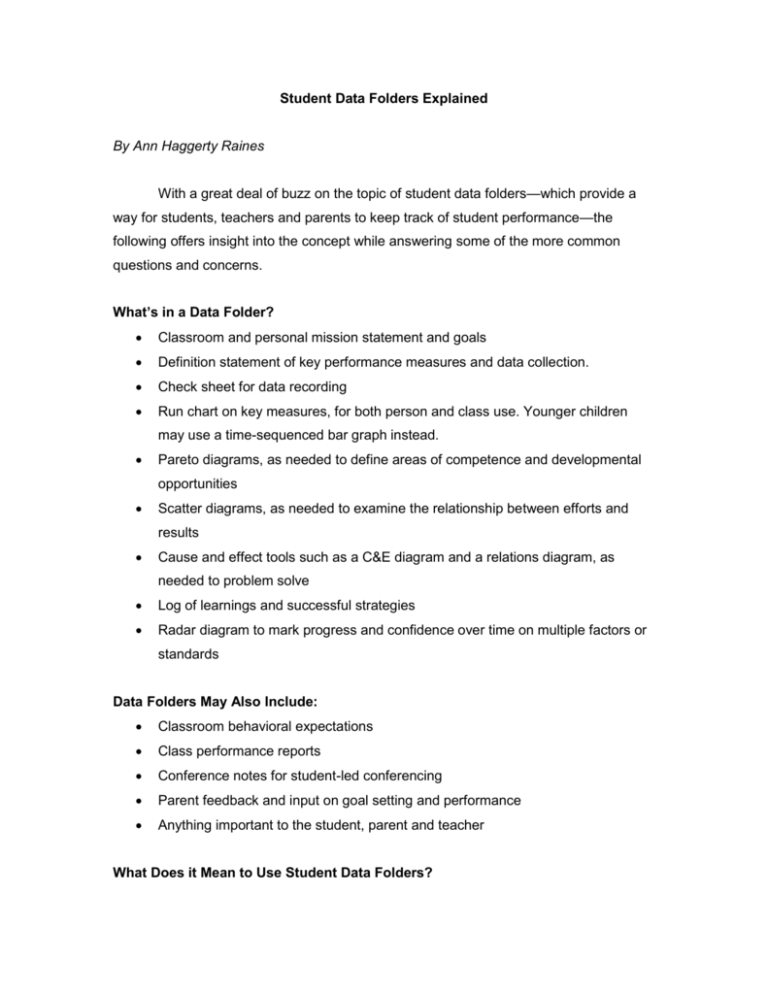
Student Data Folders Explained By Ann Haggerty Raines With a great deal of buzz on the topic of student data folders—which provide a way for students, teachers and parents to keep track of student performance—the following offers insight into the concept while answering some of the more common questions and concerns. What’s in a Data Folder? Classroom and personal mission statement and goals Definition statement of key performance measures and data collection. Check sheet for data recording Run chart on key measures, for both person and class use. Younger children may use a time-sequenced bar graph instead. Pareto diagrams, as needed to define areas of competence and developmental opportunities Scatter diagrams, as needed to examine the relationship between efforts and results Cause and effect tools such as a C&E diagram and a relations diagram, as needed to problem solve Log of learnings and successful strategies Radar diagram to mark progress and confidence over time on multiple factors or standards Data Folders May Also Include: Classroom behavioral expectations Class performance reports Conference notes for student-led conferencing Parent feedback and input on goal setting and performance Anything important to the student, parent and teacher What Does it Mean to Use Student Data Folders? Replacing reliance on standardized tests by instituting an interim measurement process for critical classroom outcomes that may be tied to standardized tests Putting data tracking in the hands of the students, while retaining control of the grade book Teaching students to plot and interpret data, determine cause and make changes accordingly, and monitor those changes for effectiveness (Plan-Do-Study-Act cycle) Engaging students in solving classroomwide problems and creating plans for change Encouraging students to evaluate best practices and determine which strategies work best for them as individuals Allowing students to consult and help each other with both best practices and strategies for success Why Does it Matter? Why is it Useful? The industry made a significant shift during the 1990s from a quality control mindset to quality improvement and management thinking. Education has adopted this belief for many of the same good reasons. The comparison is detailed below. In the quality control model A few well-trained quality experts (teachers) make decisions based upon data that control the work of all involved in the work (students). Data monitoring is done by the teachers outside of the process and the students. Accountability for results is in the hands of the teachers. Measurement (assessment) is easy, tidy, controlled and available in one location: the teacher’s grade book. While the teachers may be deeply committed to making changes that matter, they often lack critical information about the process, the environment and the students involved. In the quality improvement / management model Each person who operates in and around the process becomes a quality professional, who is responsible for keeping data and making decisions accordingly. Data monitoring is done real-time by the students, and the opportunity to correlated cause and effect is in place. Accountability is in the hands of the student, who operates the process. Measurement (assessment) may be in multiple locations and may take some effort to keep tidy and controlled. Decisions are more individual, and involve everyone choosing his or her best practice. Students can become deeply committed to making changes that matter to them, and they often possess critical information about the process, the environment and the people involved. Motivation continues to grow and becomes intrinsic. How Can I Start Using Student Data Folders? Instituting student data folders means a philosophical leap to, or confirmation of, the following beliefs: We need students to become engaged in learning, because simply teaching harder doesn’t make learning happen. Each student is a unique learner, and while we as educators can offer a variety of approaches or best practices, each student must find what works for him or her. Most students want to know what is expected of them and where they currently are against expectations. If you can measure it, you can manage it. The same skills and tools that will allow our students to manage their learning will make them desirable employees later in life. After-the-fact assessment is frustrating. Moving to real-time assessment gives students the opportunity to monitor and improve their learning as it happens, and allows for fewer surprises and frustrations. Motivated students get better results with scores and in learning because they not only learn content but hone problem solving skills and gain critical information about their learning style for future use. And a structured approach to work with students on: Creating student data folders and logs, defining clear criteria for success and setting learning expectations Setting both classroom and personal goals Understanding how data will be collected and used Interpreting data Exploring cause and effect relationships through data and other tools Empowerment to take action to leverage strengths, with conscious competence and best practices, and address learning challenges Ann Haggerty Raines is an ASQ member and Koalaty Kid facilitator.
